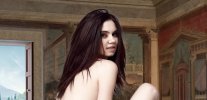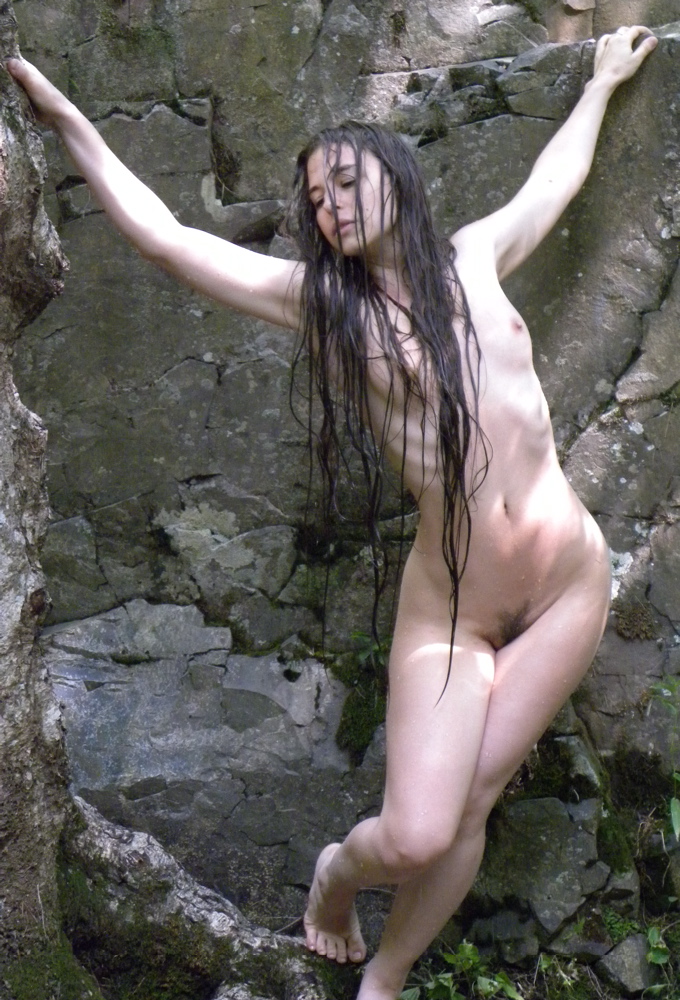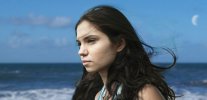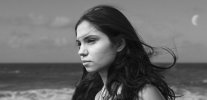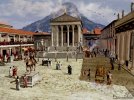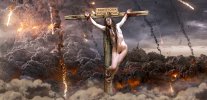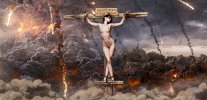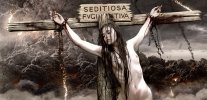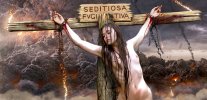'A Painter's Model'
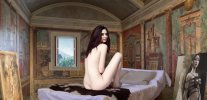
'So I'm intiated into my new job, a really tough job, being a painter's model, and Rubio is very demanding. We mustn’t lose the pose, which is always very complicated, before he has completed his sketch, so my muscles grow numb muscles, pain begins to torture my back, my legs are siezed with cramps. More naked than dressed, or with clothes that leave much of the skin revealed, one day I have to be a nymph, the next a naiad, or Diana, Minerva, Flora or Electra, or one of the muses, or Venus herself, so my body is to be put on display in frescoes that everyone will admire.'
(From 'Amica, the Slavegirl of Pompeii' by Velut Luna)
Luna's description of the ordeals endured by Amica whilst posing in the artist's studio is significant in view of her impending misfortunes later in the story. She refers to 'pain' and 'torture', as well as being 'seized with cramps. More naked than dressed...', all of which seems to provide a foretaste of her suffering as a slave in the tile quarry and ultimately of her crucifixion.
Before she is captured and sent to the slave labour camp, Amica spends some time hiding in a portrait studio belonging to the artist, Rubio. Disguised with her hair dyed black, she poses as the artist's model, whilst Rubio sketches his designs for the frescoes in the Baths of Diomede. During this period, Luna refers to examples of the pictures of Amica, painted by Rubio, including the fantasy warrior and the double portrait with blonde and dark hair, which symbolises Amica's disguise as well as reflecting the light and dark themes of each half of the story.


L'bogo has pointed out that Luna based her characters on real people, and he has kindly drawn my attention to the fact that Rubio is synonymous with Luis Royo, the artist who actually painted the pictures which Luna presents. Through Amica, Luna now assumes the role of the dark-haired art model with whom she identified, and so I have shown Ana-Maria Ilinca, posing in the artist's studio, with Luis Royo's pictures on either side. The Aisii source image, taken by Daniel Ilinca, dates from 2017 and is entitled, 'Lotus Flower'.

As a painter of frescoes, it seems appropriate for Rubio's studio to be decorated in a trompe-l'œil architectural style, and so I have used a background which is an authentic Roman interior. This is the cubiculum, or bedroom, from the villa of P. Fannius Synistor at Boscoreale, which was remarkably well preserved following its burial in the AD 79 eruption of Vesuvius.

Several Roman villas have been discovered at Boscoreale, which lies on the lower slopes of the volcano, between Pompeii and Herculaneum, although the site has not been fully excavated in the manner of its better known neighbours. This particular interior has been salvaged complete, and is currently preserved at the Metropolitan Museum of Art in New York City. In my picture, the view from the window is a manipulated reconstruction.
Another of Luna's characters is named Fannius, the dashing soldier and son of Lucius, who takes Amica to spend a romantic interlude at his villa on the slopes of Vesuvius. Knowing Luna's inclination for adapting the names of real people, it is not unlikely that she named her Fannius in recognition of the owner of the villa at Boscoreale.
Rubio informs Amica that there is a bed in the studio, making this a comfortable hiding place, and so I have included a suitable Roman reproduction from the Villa Pompeianum at Aschaffenburg.

The publication of this manipulation co-incides with Ana-Maria's birthday on 2nd October, and since she has provided so much inspiration to Luna, and latterly to myself, it seemed appropriate to mark the occasion with a portrait detail of Amica in her role as an art model. Despite the number and variety of her expressive poses, Ana-Maria almost never smiles, and we have to look outside her modelling portfolio for cheerful expressions. I was lucky enough to find a picture, taken at a social event, in which the angle of Ana-Maria's face corresponds exactly to the studio pose I had used in the manipulation.

Due to the low, blue lighting conditions, the smiling portrait was converted to monochrome and then recoloured to blend with the face of the original picture. Selective filter treatments and digital repainting completed the effect, and the result is an image of Amica looking reasonably cheerful in spite of her discomfort, as she poses for Rubio.
